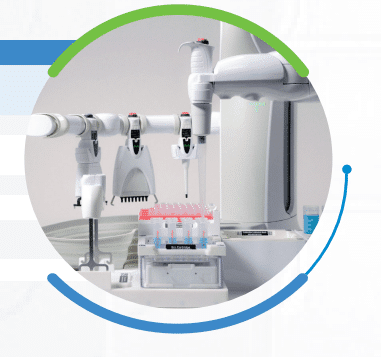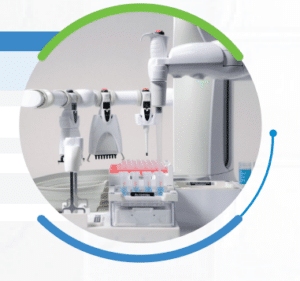Read Time: 5 min
Pipetting Techniques – a quick brief:
- Pipetting technique is a term that is used to refer to the full scope of a user’s interactions with a pipette as they conduct their experiments.
- The liquid is drawn into an attached pipette tip, which is uniquely chosen for the volume being handled.
- The purpose of pipetting is to transfer a specific volume of a sample or reagent.
Within a laboratory setting, accuracy is integral to the precision of the work. Small errors can have big ramifications, this is especially true with data sensitive practices like pipetting. Innovative tools that are integrated into your laboratory setting can help with minimizing errors.
Pipetting Challenges and Automation
There are several issues that arise from manual pipetting. Variances in technique and fatigue can cause big differences in results. Factors such as temperature, liquid type, and pipette calibration further impact accuracy, necessitating meticulous attention to detail.
Integrating automation into your lab workflows will alleviate issues with manual pipetting, issues like discrepancies with results, human error and project slippage due to errors.
Innovations in Pipetting Solutions
There are a few innovative tools on the market that are designed to streamline laboratory procedures, the Andrew+ Pipetting RobotTM and the OneLabTM Software, both of which are designed to optimize accuracy and reliability.
Andrew+ Pipetting Robot:
Andrew+ Pipetting obot offers fully automated liquid handling using electronic pipettes and labware holders called Dominos. By adding Connected Devices our ever-expanding portfolio of connected devices and tools for processes such as heating, shaking or labware transportation, the Andrew+ Robot evolves into a full walk-away automation solution.
The top #3 features of The Andrew+ Robot include:
Reproducibility and full traceability of sample preparation is assured using a highly intuitive browser-based software environment.
Andrew+ pipetting robot uses single and multichannel electronic pipettes, ensuring the best liquid handling performance and maximum flexibility.
The Andrew+ Robot is compact, the liquid handling robot is designed to fit most laboratory benches and biosafety cabinets (BSC). The Andrew+ Robot, even with 2 full rows of Dominos (allowing the use of 7 microplates or 56 falcon tubes or 168 microtubes) occupies a depth of ~55cm/22”, that fits even the smallest hoods.
What are the safety benefits of the Andrew+ robot?
Accuracy: Laboratory automation eliminates most human errors resulting in more reliable data and improved productivity. Together with complete integration with OneLab Software, all experimental data from the Andrew+ Robot will be recorded and stored.
Promoting Health: Pipetting requires repetitive movements (of up to 500 times per day for the average user) that can lead to musculo-skeletal disorders like repetitive strain injury. The Andrew+ Robot helps eliminate physical stress to professionals, and reduces the risk of exposure to hazardous materials.
Data Integrity: Data management is seamless with the Andrew+ Robot, the OneLab software stores research data, which enables scientists to make informed decisions and adjustments.
Best Practices:
Design & Execute Laboratory Protocols: Define your laboratory protocol in OneLab through an intuitive graphical drag-and-drop design interface. For example, to perform a liquid handling operation, add the required consumables and samples on the virtual bench, and then drag the pipette from the source to the destination as you would on a real bench.
Precision through Automation: Pipetting remains an integral task in most laboratories, and it’s usually done manually, pipetting is often laden with errors due to human fatigue and inconsistencies in workflows and measurement. The Andrew+ Robot is a fully automated solution that allows for precise pipetting and provides a fully integrated solution for your laboratory.
The Top #3 ways automation will improve your laboratory research and development:
Data Quality: Improved data quality leads to increased reliability and efficiency within your research findings.
Costings: Automation will minimize the frequency of having to perform experiments, which will in turn minimize the amount of waste produced by your laboratory and ultimately reduce labour and material costs.
Improved Timelines: Moving to an automated system means your researchers can allow for multiple experiments to run simultaneously and iterate on their hypotheses with greater speed.
The future of Laboratory Automation
Future advancements could see enhanced integration with artificial intelligence for data analysis, greater connectivity between lab equipment, and further developments in the size of robotic components could all make a big difference.
With these improvements and advancements, we will see big boundaries being pushed and the scientific world moving towards greater discoveries.
Click below to Watch video
For more information about the Andrew+ pipetting robot, visit us here.
Find out more about Waters



